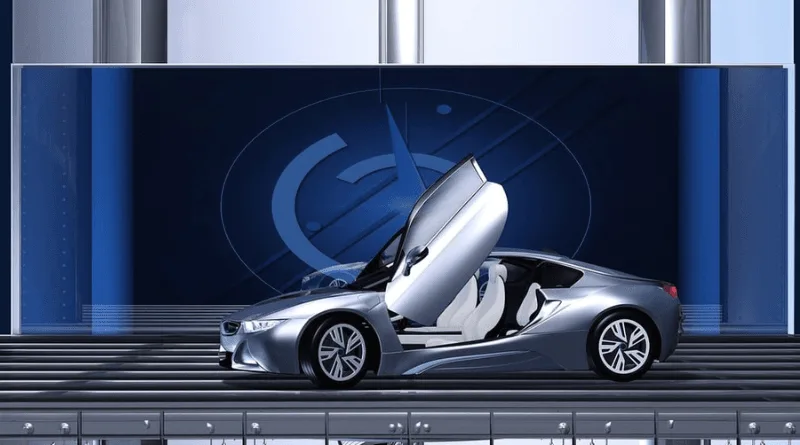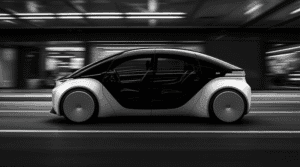Self-Driving: Are We Ready for the Era of Driverless Cars?

When discussing the future of global transportation, self-driving cars are expected to dominate the conversation.
Although this type of vehicle is still in its infancy due to numerous factors related to infrastructure and public acceptance, in the long term, all cars could become self-driving, saving significant effort and time, and reducing accidents caused by human error.
These cars rely on artificial intelligence, advanced sensors, high-resolution maps, and machine learning technologies to achieve the highest levels of safety and control while driving.
How Self-Driving Cars Work
These cars rely on a complex system for collecting and processing data to make safe driving decisions. The main components of this system include:
Sensors:
· Cameras: Collect visual information about the environment, such as traffic lights, road signs, pedestrians, and other vehicles.
· Radars: Use radio waves to determine the distance, speed, and direction of surrounding objects, even in adverse weather conditions.
· Lidar: Uses lasers to measure distances and create accurate 3D maps of the environment around the vehicle.
· Ultrasound: Used to measure short distances, it is extremely useful for parking and detecting nearby obstacles.
Artificial Intelligence and Machine Learning:
Algorithms process the vast amounts of data received from sensors in real time.
These algorithms help the car understand the environment, identify objects, predict their behavior, and make appropriate driving decisions such as accelerating, braking, steering, and changing lanes.
Generative AI is significantly accelerating the development of these systems, allowing them to process massive amounts of data with greater accuracy and safety.
High-resolution maps:
Self-driving cars rely on highly detailed digital maps to accurately locate themselves on roads, navigate, and plan trips.
Intelligent navigation systems: Provide accurate directions and real-time traffic updates.
Advanced connectivity (V2X): Enhanced vehicle-to-vehicle (V2V) and vehicle-to-infrastructure (V2I) connectivity to increase safety and provide traffic and hazard information.
Levels of autonomy:
Cars are categorized according to their driving capabilities on levels from 0 to 5, as follows:
· Level 0: No autonomous driving system.
· Level 1 (Driver Assistance): One automated function, such as adaptive cruise control.
· Level 2 (Partially Automated Driving): Two or more functions working together, such as adaptive cruise control and lane-keeping assistance, but the driver must be prepared to intervene.
· Level 3 (Conditional Automated Driving): The car can drive itself under certain conditions, but the driver must be prepared to intervene when the system requests it.
· Level 4 (Highly Automated Driving): The vehicle can drive fully autonomously in specific conditions, such as specific geographic regions or weather conditions, without human intervention, but may require human intervention outside of these conditions.
· Level 5 (Fully Automated Driving): The vehicle is capable of driving fully autonomously in all conditions and on all roads, without requiring any human intervention.

Leading companies in the self-driving car industry:
Companies such as Tesla, Waymo (a Google subsidiary), Cruise, Mercedes-Benz, Ford, and BMW are among the leaders in this field.
Tesla:
For example, it has a “Full Self-Driving” (FSD) system that uses artificial intelligence for autonomous driving.
Waymo:
Provides evidence of the safety of its self-driving cars by publishing data on mileage and accidents.
CyberCap:
Some companies are moving toward developing fully autonomous robotaxis without a steering wheel or pedals, such as Tesla’s CyberCap.
Potential benefits of self-driving cars:
· Improved traffic safety: Self-driving cars are believed to significantly reduce road accidents caused by human errors such as distraction, fatigue, and drunk driving.
· Ease traffic congestion: By improving traffic flow and vehicle spacing, they can contribute to reducing congestion and fuel consumption.
· Save time and effort: They enable passengers to engage in other activities during the trip instead of focusing on driving.
· Environmental Protection: The use of self-driving electric cars reduces carbon emissions.
· Easy Access to Driving for All Populations: This will provide freedom of movement for the elderly, the disabled, and those unable to drive.
· Economic Efficiency: Reducing healthcare and insurance costs associated with accidents.
Challenges Facing Self-Driving Cars:
· Safety and Public Confidence: Individuals’ concerns about their ability to drive safely remain a major obstacle. Although preliminary data indicates their safety, even a minor accident sparks widespread controversy.
· High Cost: The advanced technology used in these cars leads to high prices, limiting their spread.
· Infrastructure: These cars require smart infrastructure equipped with vehicle-to-road (V2I) communication technologies, which requires significant investment.
Legal and Ethical Challenges:
· Accident Liability: Who is responsible in the event of an accident? Is it the manufacturer? The software developer? Or the vehicle owner? This is a complex issue that requires clear legal frameworks.
· Ethical Decisions: How should a car behave in emergency situations that require difficult decisions, such as choosing between avoiding a collision with two people or one?
· Privacy and Data Security: The collection of massive amounts of data raises concerns about individual privacy and the security of this data from cyberattacks.
· Signs and Recognition: Some traffic signs may be unclear or damaged, making it difficult for systems to read them correctly.
· Technical Challenges: Despite significant advances, there is still a need to improve systems’ ability to handle complex and unpredictable situations, such as unpredictable human driving behavior or extreme weather conditions.
Global Legislative Status
Despite global progress, legislation related to autonomous vehicles in various regions of the world is still in its infancy.
Research and studies in the region focus on legal and jurisprudential aspects related to liability for accidents and the compatibility of current laws with technological developments. It is expected that significant legislative amendments will be required to accommodate these vehicles and define the legal frameworks regulating their operation.
When will self-driving cars become widespread?
This doesn’t seem possible in the near future, as the current situation suggests:
· Today’s self-driving cars are still in the testing and development stages, and most fall within Levels 2 and 3 of autonomy, meaning driver assistance and conditional driving.
· Level 4 (high autonomy) is available in very limited areas and under specific conditions, such as robotaxi in some US cities.
· Level 5, fully autonomous driving in all conditions, is still theoretical and has not yet been implemented commercially.
Note:
Self-driving cars represent a revolution in transportation, but the road ahead is still full of challenges that require collaboration between governments, manufacturers, and researchers to ensure the safe and effective adoption of this technology.
Also read:
- should-you-buy-bitcoin-now-or-is-it-too-late-in-2025
- the-age-of-ai-agents
- a-leak-reveals-the-iphone-17s-battery-capacity-predicting-radical-changes
- samsung-unveils-its-thinnest-phone-the-galaxy-z-fold-7
- a-self-driving-tesla-taxi-crashes-into-a-parked-vehicle




